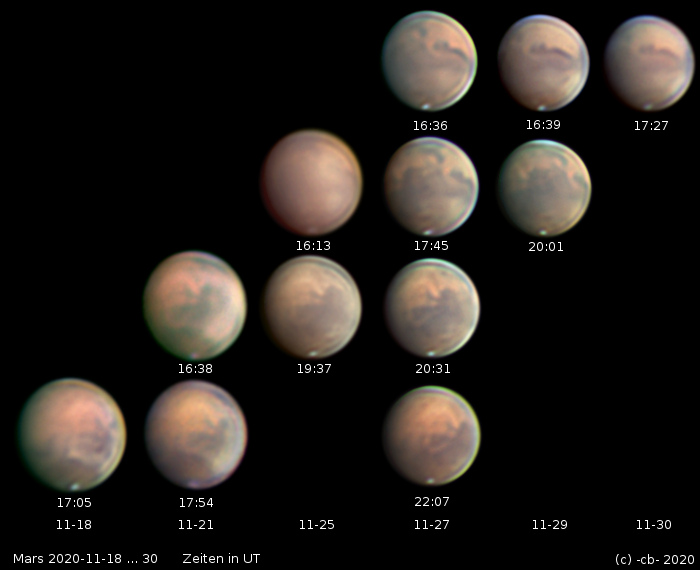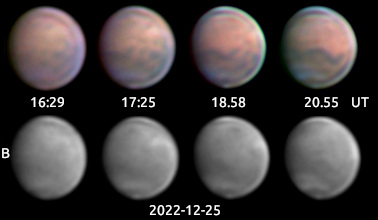




|

|

|

|
Mars |
|||
2020The 2020 Mars opposition was definitely an event to remember, because the distance to Mars reached almost the theoretical minimum, which happens only once every ~15 years. Luckily, weather was good, too, for a lot of nights.
I started a bit late with observations, when Mars already had reached a comfortable size. Soon the search for weather phenomena (clouds and/or haze layery) became a focus for me. Above, on the left, tiny clouds over the Tharsis volcanoes can be seen, on the right, haze layers hover in Mare Acidalium in the northern hemisphere. Looking at the RGB filter blue channel is very helpful for distinguishing cloud and haze occurences. 

Close to opposition, the biggest volcano Olympus Mons always appears extra prominent (top row). Frost layers in great heights might play a role here, causing back-reflection of sunlight when Sun, Earth & Mars are lined up. Besides that, the common morning a/o evening side haze layers are present, which can appear due to the colder temperatures 
The 2020 opposition was rather quiet, no really widespread and/or dense cloud fields occured except in the polar regions. Also, there only was one dust storm of at least partly global dimensions. Unfortunately, it occurred in November, when Mars was already moving away from Earth quickly. Besides that, cloudy weather made a continous day by day coverage of the storm impossible. Especially during the important phase from the start around 17/18th Nov. to its the greatest extension around 20th/21st Nov. opportunities for recording were scarce. 
Christmas Mars from 2020. One of my last recordings of the season with Mars at a reasonable size for a 6" scope. Extended haze bands can be seen in the south. |
| <-- Back to Space Home | ||

|
||